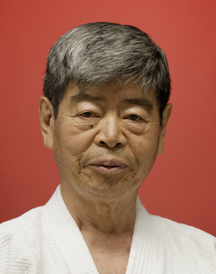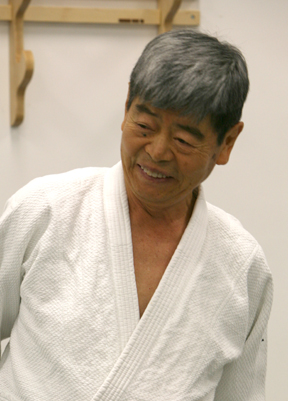Stealing technique – Respect and traditional training
I started training in budo in the late 1960s as a young teenager. From the moment I walked through the dojo door for the first time, I was aware that different cultural expectations ruled the space. Even though none of the sensei or students were oriental, that budo culture was clear and pervasive. For me, sensing that atmosphere when I walk into a dojo today is the hallmark of a good training environment.
I often see students slowly growing into the same realizations I had to back then. One aspect of budo culture is that the culture itself is very seldom explained or discussed. Most students come to understand it only in a very haphazard way, often through criticism from their sensei or sempai (seniors).
The assumptions behind traditional budo training can be confusing for students raised in a Western educational system. In school, they are taught to discuss things openly, debate and question, and attempt to arrive at truth through a dialectic process.
They can be shocked when they discover that completely different rules apply in the dojo. A traditional sensei has little interest in discussing why training is done the way it is or in entertaining a student’s suggestions on how it can be improved.
It is a very, very old training culture.
Most traditional martial arts were battlefield systems used in feudal Japan, taught through forms – often two-person forms. In those days, the forms were closely held secrets. Since there was a very good chance that a student would end up facing a student from another style in combat, it was essential that the style’s most effective techniques remained a surprise its enemies.
That is the negative connotation of “stealing technique” – spying out technique from a martial school to better defeat it and the teachers of those days were careful to protect themselves.
To keep the art secret, new students were not automatically granted admission to those dojos. They often had to be clan members or supply letters of reference from persons of influence known to the sensei. They sometimes had to serve for considerable periods of time performing menial tasks to demonstrate their commitment before being allowed to practice.
The training itself consisted of copying the sensei’s form exactly. No modifications were permitted. If the sensei saw a student deviating from the norm and “practicing his own way,” that was usually followed by instructions to leave the dojo permanently.
In traditional budo, once you had practiced long and hard and mastered the form, you might receive one of several levels of certificate to recognize your competence. In some cases, students were even encouraged to travel and test the art against strangers.
Morihei Uyeshiba (O-Sensei), the founder of Aikido, came from this traditional background. He seldom explained technique to his students. He would demonstrate freely and openly in front of them, often modifying techniques on the fly. He would lecture the students at length on spiritual matters, which he felt were the real core of the art, but seldom talked about the mechanics of technique. He took it for granted that talented students would be able to figure out the techniques on their own.
That attitude dates back to O-Sensei’s early training. His primary teacher, Sokaku Takeda-sensei, was master of Daito-ryu Aikijutsu. He made a living teaching Aikijutsu while travelling throughout Japan.
His classes often occurred in a seminar format. He would charge the students at the seminar by the technique. They would pay a fixed sum to watch him perform one waza. If they wanted to see another one, they would pay an additional fee for that, too.
Sometimes, his demonstration consisted of performing one technique four times… right and left side and omote (frontal) and ura (reverse) variations. The students would then practice. If they wanted to see the technique again, they would pay again. Takeda-sensei felt he was fulfilling his obligations in full, simply by showing the students his art. It was up to the students to learn or not, as they wished.
It may not sound like a productive teaching method, but Takeda-sensei had dozens of outstanding students over many decades, including O-Sensei, who had learned by watching diligently and practicing without respite.
However, as Japan modernized, modern methods of education began to hold sway. While O-Sensei had not been interested in creating a technical curriculum, the Aikido shihan (masters) who followed him were. Led by the second Doshu (leader), Kisshomaru Uyeshiba (O-Sensei’s son), major efforts were made to standardize Aikido technique and establish a series of tests and a ranking system that would recognize incremental levels of improvement in students at Hombu dojo.
But there is still an undercurrent of the old style of training in a traditional Aikido dojo. Don’t talk during class, but simply follow the sensei’s example as precisely as you can and train hard. Don’t deviate from what was taught.
I remember well the frustration that Yukio Kawahara-shihan would sometimes express during classes. He was the Technical Director of the Canadian Aikido Federation, and he occasionally complained that students did not watch him closely enough to catch his technique and were not making sufficiently conscientious efforts to copy it. That was very puzzling for him. He demonstrated each waza clearly, concealing nothing – but the ensuing practice of some students bore scant resemblance to what he had shown.
The Aikido shihan have often emphasized the need to learn with your eyes – not your ears or mouth – and then ingrain what you have seen in your bones with repetitive practice.
Many of them refer to this process as migeiko (watching practice). Others have referred to it as “stealing technique.” In this context, the phrase lacks the ancient, negative connotation associated with outsiders who would spy on an art’s techniques for their own purposes. In fact, the shihan encourage “stealing technique” in the modern sense of the phrase, for their students.
The ability to “steal technique” in this way is the sign of the superior student. Essentially, it means to watch the demonstration diligently and take ownership of the waza for yourself afterwards with hard practice.
That way, you will never forget it.
(This article also appeared in Traditional Dojo magazine.)

